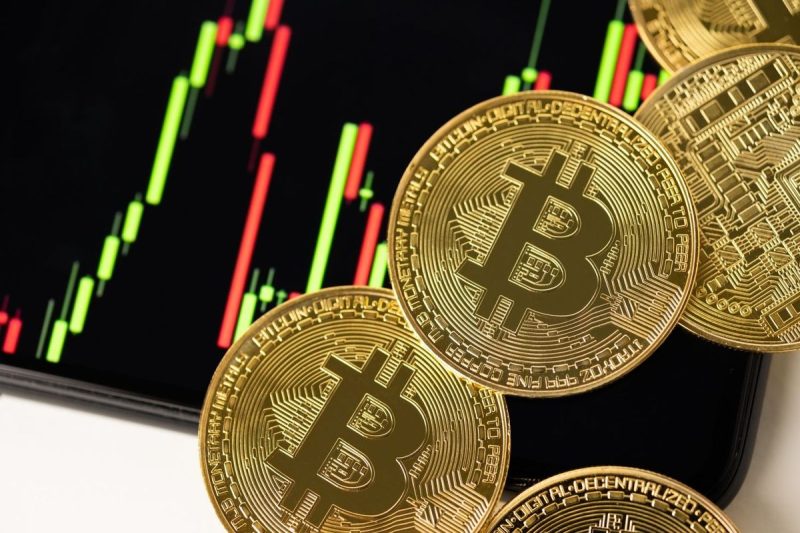A turbulent Q3 in the crypto market was marked by price volatility and shifts in investor sentiment.
Popular cryptocurrency Bitcoin, often seen as a bellwether for the industry, experienced sharp price corrections at the start of each month, with July and August witnessing declines exceeding 12 percent.
Meanwhile, Ethereum’s performance in Q3 showed signs of declining user engagement and network activity, marked by a drop in daily active addresses compared to previous periods. Competing blockchains, particularly Solana, experienced growth in user activity during the same period, potentially signaling a shift in user preferences away from Ethereum.
Read on for an overview of market-moving events that shaped the crypto landscape in Q3.
July: Crypto sector faces mixed signals
July presented a dynamic period for the crypto market, marked by shifting trends and price movements. Crypto emerged as a major political catalyst after current president Joe Biden withdrew as the Democratic nominee, and Bitcoin’s price trended upward. However, as price swings through the month demonstrated, it remained sensitive to external factors, underscoring the continued influence of news and events on Bitcoin’s supply and demand dynamics.
Bitcoin price, July 2024.
Chart via CoinGecko.
In contrast, Ether saw a steep 8 percent drop in its valuation immediately following the launch of the highly anticipated Ethereum exchange-traded funds (ETFs) on July 23. The ETFs themselves, however, fared well, demonstrating an impressive daily growth rate through the end of the month.
Ether price, July 2024.
Chart via CoinGecko.
Meanwhile, Solana emerged as a strong performer, driven by the growing popularity of liquid staking protocols. Solana outperformed Bitcoin and Ether as crypto surged between July 11 and July 21.
Focus immediately shifted to a potential Solana ETF, although analysts consider this unlikely in the near term. Solana’s decentralized exchanges ultimately processed more on-chain volume than Ethereum in July.
Despite some volatility, the CoinDesk 20 Index finished the month ahead by 1.98 percent.
August: Crypto markets falter, recovery lags stocks
August began with turmoil as macroeconomic headwinds triggered a wave of selloffs that affected the entire economy after the Bank of Japan unexpectedly raised interest rates on July 31.
In the US, employment data ignited fears of a recession and sparked a widespread stock rout. By August 5, the crypto industry had lost US$510 billion, and Bitcoin was below US$50,000, its lowest valuation since February.
While the broader stock market quickly rebounded, Bitcoin and Ether’s prices remained subdued, with a “death cross” pattern forming in Bitcoin’s price action, a historical signal of further potential decline.
Crypto sector market cap, August 2024.
Chart via CoinGecko.
The downturn was exacerbated by a surge in short-selling activity. Institutional investors initially provided some buying support after the rout, scooping up digital assets at lower prices, but this proved to be a short-lived reprieve.
As the month progressed, momentum shifted decisively toward sellers, with many likely capitalizing on the opportunity to short Bitcoin and other cryptocurrencies, further amplifying downward pressure.
Enthusiasm for Ethereum ETFs also waned in August, with net outflows increasing as investor sentiment turned bearish. Amidst this downturn, SOL continued to demonstrate resilience, demonstrating its potential to establish itself as a strong contender in an evolving crypto landscape.
September: Bitcoin and Ether break through resistance
September, a historically bearish month for the crypto industry, showcased its resilience.
The US Federal Reserve’s long-awaited interest rate on September 18 cut propelled Bitcoin and Ether prices through resistance levels. Meanwhile, market watchers also observed a surge in stablecoin valuations, particularly for XRP, following the launch of Grayscale’s XRP Token Trust on September 12.
Rekt Capital suggested that the end of September could mark the culmination of Bitcoin’s post-halving “reaccumulation range,” suggesting a potential transition toward a bull cycle heading into Q4. However, the firm also said it wouldn’t be surprising to see Bitcoin consolidate further in September before breaking higher in October.
Ultimately Bitcoin ended the month up 7.39 percent, just above US$64,540.
Also at the end of Q3, BlackRock’s spot Ethereum ETF surpassed US$1 billion in value for the first time.
Watch these crypto market factors in Q4
In a report on Q4 crypto market dynamics, Canadian fintech company WonderFi notes that while Bitcoin is still highly volatile, prices are showing longer periods of stabilization, suggesting it could be maturing as an asset class.
The firm points to global liquidity and politics as factors likely to influence the crypto market in Q4.
Matt Hougan of Bitwise Asset Management and Ric Edelman, founder of the Digital Assets Council of Financial Professionals explained during the Q4 outlook webinar that Solana and Ethereum will likely be successful in Q4, matching sentiments expressed by Michaël van de Poppe for CoinTelegraph on September 3.
The upcoming election will undoubtedly be one of, if not the, most influential events to the crypto market in Q4. While a sitting president does not have direct control over the specific regulatory decision for crypto, the policies and priorities of the next administration will undoubtedly impact the future of the industry.
In a September 9 report, Bernstein Private Wealth Management predicts that Bitcoin could rise as high as US$90,000 if presidential candidate Donald Trump wins the US election in November, while a victory for current Vice President Kamala Harris could cause its value to plummet to US$30,000. Democrats have historically taken a more rigid stance in terms of regulation and consumer protection, although that tone appears to be changing.
The crypto industry has remained keenly tuned to potential shifts in leadership at key agencies such as the US Securities and Exchange Commission (SEC), which has had a contentious relationship with the crypto industry under Chairman Gary Gensler’s leadership. During a hearing by the US House of Financial Services Committee on September 25, senators in favor of a friendly crypto environment in the US criticized Gensler’s “reckless” handling of the industry.
Many voices in the crypto community have called for regulation to be designated to the Commodity Futures Trading Commission instead, and the agency has argued that at least 70 percent of cryptocurrencies, including Bitcoin and Ethereum, should be considered commodities and not securities.
At the peak of Trump’s favorability following President Joe Biden’s exit from the race, 10x Research analyst Markus Thielen predicted that Gensler would likely leave the SEC in early 2025. With Harris as the new Democratic nominee, there has been no indication that she plans to replace Gensler if she wins, but the confirmation of SEC Enforcement Director Gurbir S. Grewal’s departure from the SEC on October 11 has prompted speculation that he could be next.
FIT21, a bill designed to provide regulatory clarity and strong consumer protections for the digital asset industry, made history in May when it was the first crypto legislation to pass in the US House of Representatives. It has since been deferred to the Senate Committee on Banking, Housing, and Urban Affairs.
At Crypto4Harris, a virtual town hall event organized by advocates and held on August 15, Senate Majority Leader Chuck Schumer said he was hopeful that crypto legislation could be passed this year; however, thus far the Senate has not scheduled a vote, making it challenging to forecast the likelihood of the bill’s passage.
In addition to FIT21, Congressman John Rose (R-TN) introduced the BRIDGE Digital Assets Act to Congress on September 12. This bill seeks to establish a joint advisory committee consisting of members of the SEC and Commodity Futures Trading Commission. It was referred to the Committee on Financial Services and the Committee on Agriculture.
The House’s next session is scheduled for November 12 to 21.
Investor takeaway
As the industry continues to mature, the final quarter of 2024 promises to be a defining period for the crypto market. With continued institutional adoption, evolving regulations and the rising interest in altcoins, this period could witness significant growth and innovation within the industry.
Securities Disclosure: I, Meagen Seatter, hold no direct investment interest in any company mentioned in this article.

























